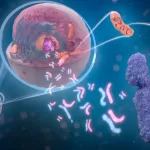A groundbreaking study sheds light on the visual experiences of infants, unveiling a world starkly different from that of older individuals. Published on May 10 in Science Advances, the study titled “An edge-simplicity bias in the visual input to young infants,” conducted by IU researchers Erin Anderson, Rowan Candy, Jason Gold, and Linda Smith, unveils the distinctive visual environment that shapes early human vision.
Contrary to the common assumption that visual input remains consistent across age groups, the research suggests that it varies significantly with development, particularly during infancy. Linda Smith, the principal investigator and a professor in the Department of Psychological and Brain Sciences at IU, remarked, “The daily life input for very young infants appears to be unique to that age.”
Previous studies hinted at infants’ preference for simple, high-contrast scenes, but this study delves deeper, exploring the extent to which these preferences permeate their daily experiences. Anderson, a former postdoctoral researcher in Smith’s Cognitive Development Lab, explained the methodology, stating that infants wore head-cameras during daily activities to capture their visual surroundings. Surprisingly, the videos revealed that infants encounter the same high-contrast patterns found in baby flashcards throughout their daily lives, from lights to ceiling corners.
Smith compared this early visual experience to a specialized diet for optimal development, emphasizing the importance of laying a strong foundation for future visual abilities. Notably, research has linked deficiencies in early visual experiences to lifelong impairments, underlining the critical nature of this developmental period.
The study also has significant implications for artificial intelligence (AI) systems, suggesting that they too benefit from exposure to early infant visual content. By training AI systems with images characteristic of early infancy, researchers observed enhanced learning outcomes compared to random or adult-centric image inputs.
The research team’s investigation extended beyond Bloomington, Indiana, to a fishing village in Chennai, India, where similar patterns were observed in infants’ visual experiences despite cultural and environmental differences.
Reflecting on the evolutionary significance of infants’ slow motor development, Smith speculated that these incremental biases contribute to the development of highly sophisticated visual and auditory systems over time.
In addition to shedding light on the visual content of early infancy, the study prompts further inquiries into its role in both human and AI visual system development.
The collaborative efforts of IU Bloomington professors Rowan Candy and Jason Gold, among others, underscore the interdisciplinary nature of this groundbreaking research.
As humanity seeks a deeper understanding of the earliest stages of development, this study opens new avenues for exploration, offering insights that could reshape our understanding of human perception and artificial intelligence.












